
Filter News
Area of Research
- (-) Fusion and Fission (19)
- (-) Supercomputing (115)
- Advanced Manufacturing (14)
- Biological Systems (15)
- Biology and Environment (42)
- Biology and Soft Matter (1)
- Building Technologies (3)
- Chemistry and Physics at Interfaces (4)
- Clean Energy (187)
- Climate and Environmental Systems (2)
- Computational Biology (4)
- Computational Engineering (2)
- Computer Science (6)
- Electricity and Smart Grid (1)
- Energy Frontier Research Centers (7)
- Energy Sciences (3)
- Fossil Energy (2)
- Fuel Cycle Science and Technology (1)
- Functional Materials for Energy (8)
- Fusion Energy (2)
- Geographic Information Science and Technology (2)
- Isotope Development and Production (1)
- Isotopes (10)
- Materials (226)
- Materials Characterization (2)
- Materials for Computing (13)
- Materials Synthesis from Atoms to Systems (5)
- Materials Under Extremes (5)
- National Security (25)
- Neutron Science (80)
- Nuclear Science and Technology (27)
- Nuclear Systems Modeling, Simulation and Validation (1)
- Nuclear Systems Technology (1)
- Quantum Condensed Matter (1)
- Quantum information Science (2)
- Reactor Technology (1)
- Sensors and Controls (1)
- Transportation Systems (5)
News Type
News Topics
- 3-D Printing/Advanced Manufacturing (3)
- Advanced Reactors (3)
- Artificial Intelligence (14)
- Big Data (2)
- Bioenergy (6)
- Biology (5)
- Biomedical (6)
- Biotechnology (1)
- Buildings (2)
- Chemical Sciences (5)
- Climate Change (3)
- Computer Science (33)
- Coronavirus (5)
- Cybersecurity (6)
- Decarbonization (3)
- Energy Storage (7)
- Environment (4)
- Exascale Computing (10)
- Fossil Energy (1)
- Frontier (14)
- Fusion (8)
- Grid (5)
- High-Performance Computing (16)
- Isotopes (1)
- ITER (2)
- Machine Learning (6)
- Materials (11)
- Materials Science (10)
- Microscopy (6)
- Molten Salt (1)
- Nanotechnology (6)
- National Security (5)
- Neutron Science (8)
- Nuclear Energy (13)
- Partnerships (3)
- Physics (4)
- Quantum Computing (5)
- Quantum Science (11)
- Security (4)
- Simulation (5)
- Software (1)
- Space Exploration (1)
- Summit (15)
- Sustainable Energy (7)
- Transportation (3)
Media Contacts
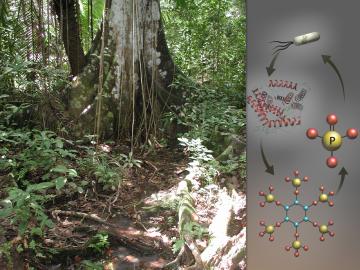

A team of researchers from the Department of Energy’s Oak Ridge National Laboratory has married artificial intelligence and high-performance computing to achieve a peak speed of 20 petaflops in the generation and training of deep learning networks on the
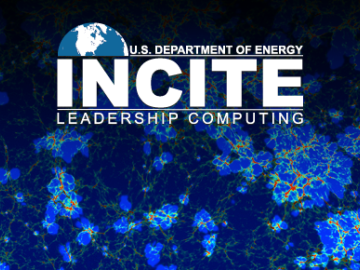
The U.S. Department of Energy’s Office of Science announced 55 projects with high potential for accelerating discovery through its Innovative and Novel Computational Impact on Theory and Experiment (INCITE) program. The projects will share 5.95 billion core-hours on t...
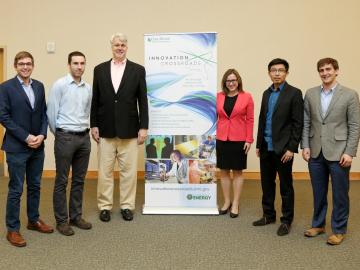
Oak Ridge National Laboratory today welcomed the first cohort of innovators to join Innovation Crossroads, the Southeast region's first entrepreneurial research and development program based at a U.S. Department of Energy national laboratory. Innovation Crossroads, ...

Virginia-based Lenvio Inc. has exclusively licensed a cyber security technology from the Department of Energy’s Oak Ridge National Laboratory that can quickly detect malicious behavior in software not previously identified as a threat.
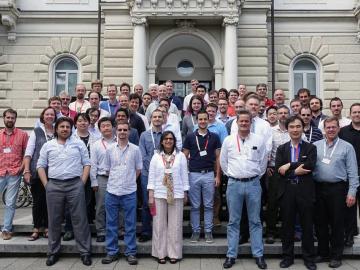
Leaders in hybrid accelerated high-performance computing (HPC) in the United States (U.S.), Japan, and Switzerland have signed a memorandum of understanding (MOU) establishing an international institute dedicated to common goals
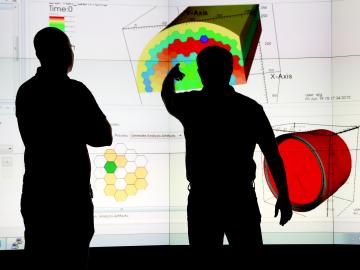

Four Oak Ridge National Laboratory researchers specializing in environmental, biological and computational science are among 49 recipients of Department of Energy's Office of Science Early Career Research Program awards. The Early Career Research Program, now in its ...
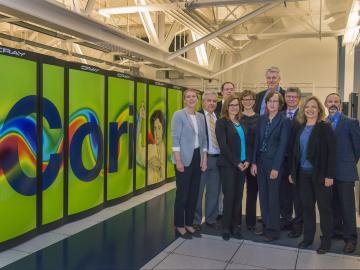
The Department of Energy’s Oak Ridge National Laboratory will support four new industry projects announced today as part of DOE’s High Performance Computing for Manufacturing (HPC4Mfg) Program. The program pairs selected companies with national labs, including ORNL...



